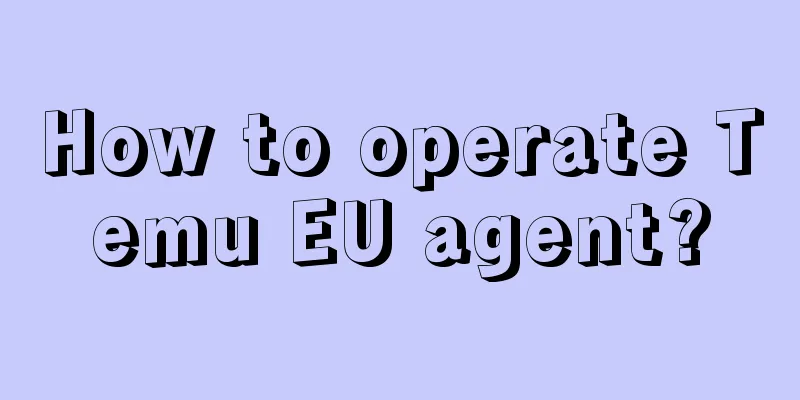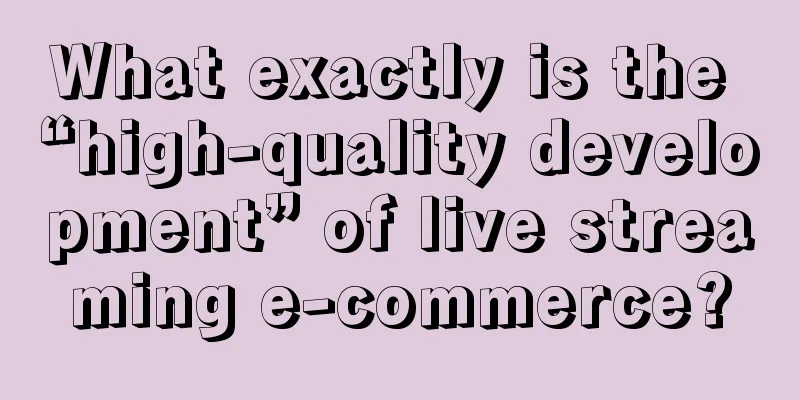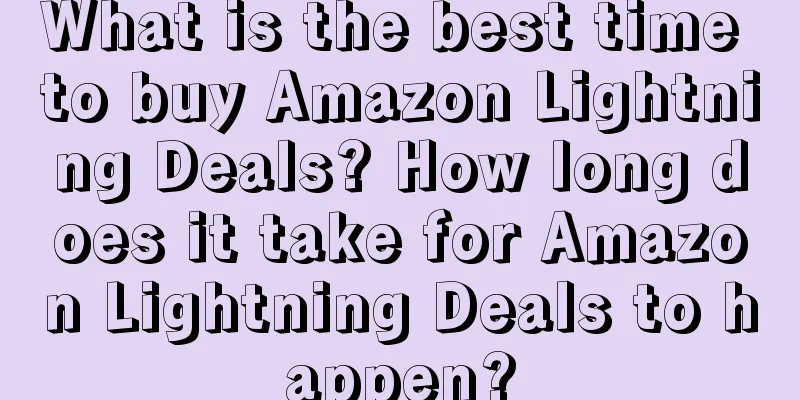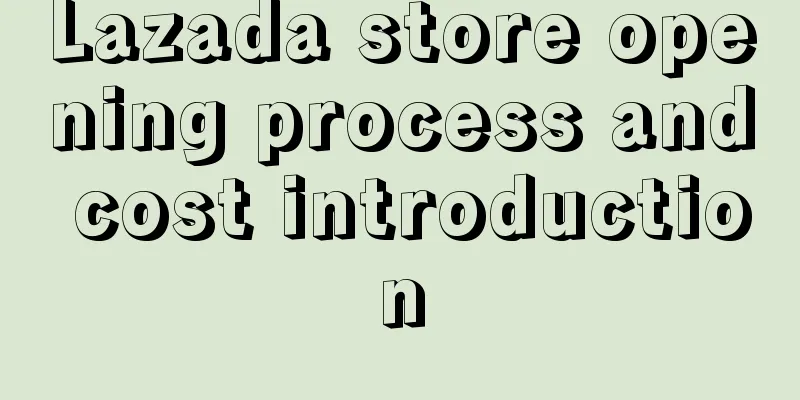"Freeloading" has become the first choice for marketing
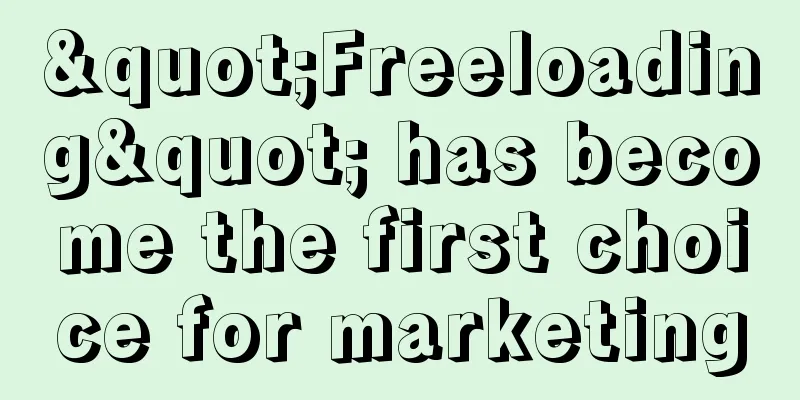
Several friends who work in marketing told me that they check hot topics every day. Why? The advertising budget is small and there are too many similar products. Once the brand awareness decreases, people will go to buy other products, so they have to take advantage of the popularity to increase awareness. Advertising is now very scattered and ineffective. Hundreds of thousands of dollars are invested but the conversion rate is low. There are too many creative contents but users are not interested at all. What should we do? You can only take advantage of the hot topics. Nowadays, users like to interact with brands that have stories and can impress them. By using hot topics, brands can quickly express their stance and have a deeper connection with everyone. Alas, marketers have a hard time. However, in order to keep up with the hot topics, there are also many problems, such as whether the hot topics match the brand, whether it will feel like forced piggybacking, and how the operation team will take over the conversion after being related to the topic. It is simple and complex. Because the essence of piggybacking is to let the hot topics drive sales and make the brand famous, and it cannot be led astray by public opinion. In all of this, the brand actually plays the role of "mouth substitute" for the masses. 01How do you understand mouth replacement? The emotions, attitudes and behaviors of a person (group) are expressed through the mouths of others. The brand is like "taking a ride" on hot topics and helping people express their inner thoughts or feelings. This not only makes more people pay attention to the brand, but also makes people feel that the brand has a "tacit understanding" with them, like an old friend. For example: When something becomes a topic of conversation, the brand will release an advertisement or poster related to it to express the views of a certain group of people, as if speaking for everyone and helping everyone to speak up. Why do users like this way of expression? The core is that everyone is more authentic. The most obvious features are: 1. Aesthetic fatigue caused by information explosionIn order to attract attention, creators nowadays often carefully "polish" and "package" their content, which makes many stories look either too perfect or overly dramatic. Looking back, when I saw an interesting video or joke in the past, I would always be surprised and ask, "Wow, is this true or false?" But now, whether it is TikTok, Weibo, or Xiaohongshu, everyone can easily see through it and know at a glance, "Oh, this must be made up." In such an environment, everyone is bombarded with all kinds of news, pictures, videos and jokes every day. Over time, everyone is a little tired. 2. Resistance to advertising formatsWhen I first entered the marketing industry, the company invited an external expert to conduct training. He proposed an interesting simulated sales scenario: "Selling combs to monks." We had to use the marketing skills we learned, act as salesmen, and try to persuade the "monks" to buy combs. This topic was full of drama and we had a lot of fun. I still remember that experience vividly. But now that I think about it, isn’t this kind of simulated sales a typical example of over-marketing? In fact, do monks really need combs? Obviously, they don't need them; but we still try to convince them, just because we firmly believe that sales skills are enough to make people pay. Today, this phenomenon of over-marketing has become more common. For example, look at the mobile phone market, where brands are competing to launch folding screens, tens of millions of pixels, and even labeling them as "Chinese products". It is no exaggeration to say that in the era of "over-marketing", it is difficult for us to tell which information is true and which brands are sincere? Living in such an environment full of distrust, advertising naturally becomes something annoying. 3. People are more interested in self-expressionIn the past, advertising and marketing methods seemed to have a fixed routine, such as repeatedly and brainwashing information through mainstream advertising media. However, it is different for the post-00s. They were born in the digital age, and their lifestyles and consumption concepts have undergone tremendous changes. They prefer content that resonates with real life emotions, and like those expressions that are diverse, personal, and true to the bone. They pursue content that is deep, flesh and blood, and full of emotion, rather than those that are overly embellished and deliberately beautified. If these contents can be closely connected with young people's real experiences and emotions, they can trigger strong resonance and self-identification; in addition to the authenticity of the content, they are also increasingly concerned about brand values, social responsibility and sustainability. A friend of mine once said that it doesn’t matter who you buy a product worth a few dozen yuan from. If a brand cannot provide me with emotional value and brings me trouble, why should I choose it? It is not difficult to see that consumers, channels, marketing, communication methods, etc. have all changed, so the strategy needs to be adjusted. 02Among these, many brands and marketers have certain misunderstandings about "riding on" hot topics. On the one hand, traditional marketers believe that making jokes and playing inappropriate jokes will not add much value to the brand and there is no need to do it. Is this really the case? No. You should know that PR is the key to branding. It means not only attracting public attention through events and controversies, but also interacting with consumers at the right time, place and in the right way to establish an emotional connection with users. Joining a trend does not mean blindly following the trend. You should first choose to participate in a hot topic and confirm whether the core value and target audience are consistent. Look at those brands that have "taken advantage" of hot topics. They don't simply make jokes or play inappropriate memes. They dig deep into the deeper meaning behind the hot topics, create valuable content related to them, and establish real resonance with consumers. For example: 79 yuan has been popular in the past two days, what is the meaning behind it? Some people say that 79 yuan is two days' living expenses, some say it can buy a week's worth of fruit and yogurt, and some say "I may not know what I can do with it, but it takes at least half a day's work to earn it." It represents the value recognition of a group of people. The hair care brand Fenghua has been able to get everyone because it deeply touched people of this era and re-recognized the value of material and time. Today's consumers are no longer simply pursuing material accumulation as they did in the past. They are more concerned about the trade-off between material and time, and care more about the quality of life and experience. 79 yuan is just a small amount of money in the eyes of some people, but for others, it means half a day's hard work, or the money for a week's worth of fruit, or even a momentary self-reward. Therefore, the real intention of "riding" on hot spots is not just to attract attention for a short time, but to strategically establish interaction with consumers, which is crucial to building a user-centric brand value. Uncle Tiepi, the founder of Yongpu Coffee, talked about the future of advertising. It must break out of the inherent model and really consider it from the user's perspective. Today's young people are no longer chasing after KOLs and Internet celebrities, but are more concerned about whether their emotions are expressed. On the other hand, the brand failed to "take advantage of" the hot topic and lacked in-depth insight. When 5G technology first came out, I clearly remember that McDonald’s official Weibo account released six posters. The theme seemed to imply that the brand was about to enter the "5G" era. Both the poster design and the copywriting seemed to imply that it would enter the mobile phone market. When these ads were actually launched, everyone realized that McDonald's had only launched a new crispy chicken product. Many people expressed on social media that they did not understand the connection between 5G and crispy chicken. Similarly, when Alibaba was involved in the "ice-breaking culture" controversy, Luzhou Laojiao promoted its products on social platforms with the following copy: "One click will break the ice and you will win a bottle of Guojiao 1573 liquor." This slogan was criticized by many people as vulgar and offensive. What does “breaking the ice” actually mean? In short, it usually refers to activities conducted to enhance team cohesion, such as games like truth or dare, which involve relatively large-scale content. Therefore, this fully illustrates a problem. If you simply apply hot words and form CPs without deeply understanding the meaning behind the hot words and the connection points with the target audience, you may be misled by public opinion. So, how can you do this thing of mouth replacement just right? 03First, find the core of the matter The core means the underlying meaning and theme. Once it is determined, it can be analyzed, communicated and discussed more specifically. Marketers are much more sensitive than others. When many hot topics come out, people will first discuss them in the community. If you want to know the whole story, you can basically find out by asking five Ws (Who, What, When, Where, Why). Who, what, when, where, why. I usually “source check” and get data and facts from multiple reliable sources to avoid single-perspective bias. In addition to discussions in professional circles, I will pay extra attention to social platforms such as Weibo and Douyin to understand how things are developing. On these platforms, users' strong emotional reactions are often a compass for finding the key to things. In order to grasp the sentiment value more accurately, I also use public opinion analysis tools. They can show the discussion heat of topics in different time periods and the public's emotional tendencies, such as positive, neutral or negative. I usually use (Weibo) Micro Index, Baidu Index, and Toutiao Index. Among these tools, WeChat data is relatively more comprehensive, and Weibo, because it attaches importance to UGC and user activity, can more accurately reflect the spread of events. But be aware that Weibo may not be as responsive to social connections. Another point, I suggest you observe the situation before expressing your opinion. Don’t be in a hurry to be the first brand to express your opinion on a hot topic; first see how other brands react, because public opinion is changeable, and taking sides and establishing opinions too early can sometimes backfire. Second, refine the points of convergence The point of convergence is the commonality between two or more elements, ideas, and scenes. First, I will look for it from six dimensions: characteristics, properties, colors, shapes, styles, and homophones, and then think about which groups it represents. That year, the ALS Ice Bucket Challenge became a popular activity on social media, and many brands of cold drinks, ice cream or other things related to "cold" were using "cold" as their creative ideas. For some negative hot spots, we can also use the "comparison method" to highlight our products, brands or advantages. When the pickled cabbage became a hot topic, many brands quickly emphasized the safety of their products, using the slogan "Eat with peace of mind" to attract a lot of attention. Also, when the "Mercedes-Benz female owner cried for rights protection" incident attracted public attention, a certain brand that had no direct connection with the incident cleverly grasped the key point of "whether it leaks or not" and issued a promotional copy of "Mercedes-Benz leaks, but I don't", which humorously and accurately conveyed the characteristics of its product. In 2020, the same thing happened with the incident between Tencent and Lao Gan Ma. Tencent said that Lao Gan Ma had invested tens of millions of yuan in advertising and had been dragging its feet. Later, Lao Gan Ma responded by saying that it had never cooperated with Tencent and reported it to the police, saying that Tencent had been defrauded by criminals. After the whole story was investigated, Tencent only had Lao Gan Ma in the cafeteria that day to warn everyone to make mistakes, which immediately became popular on the Internet. An Tai smelled an opportunity, and soon launched the "Protect the Anus of Internet Practitioners" campaign. Tencent employees only needed to pay 0.1 yuan to buy a second box of An Tai, and this topic brought tens of thousands of comments to the brand. Obviously, Tencent is self-deprecating through the cafeteria menu, showing an attitude of admitting mistakes, which can also be regarded as a kind response to the outside world; Lao Gan Ma must be spicy, and An Tai cleverly combines the product with spicy. To put it bluntly, they are all based on "associative memory". From a neuroscience perspective, the brain deepens its understanding and memory of new things by associating them with existing features. These features of things can be adjusted and edited. This means that the more we understand something and the more features we can identify, the more helpful these features will be to our thinking and memory processes. You can also use it as a way to train your thinking in your daily life. By constantly trying to establish new connections with the things around you, you can enhance your observation and creative thinking. 04Furthermore, create a sense of contrast The essence of contrast is strong contrast, which may come from color, sound, emotion, and plot. When two contradictory or opposing elements are put together, the difference between them will be magnified. Previously, "high-quality human men" became popular on Douyin. At first, they became popular by reshooting their photo poses (in the early stage, they imitated the hot spots); later, they became aesthetically fatigued, and people changed "high-quality human men" to "high-quality human women" and "low-quality human men", etc., which made the audience's eyes light up. If you really can't find any contrast, just remember the three words "go against it". For example: Last year on Chinese Valentine's Day, Luckin Coffee crossed over with the Sad Frog to form a "Frog-Luckin CP". The tacky pink and green colors were full of sad magic, which was not only eye-catching but also funny, standing out during the festival. Many smart brands will use "self-deprecation and ugliness" to help users express their emotions. I can also use the opposite method to say positive things, and first criticize before praising. Burger King previously made a "moldy burger" poster. The picture may cause appetite problems, but it made me remember it for a long time. Others had crazy promotions during 618, and the link was posted, but Xiaohongshu's 618 promotion was crazy and discouraged, and it was also sarcastic. These are all classic examples. In fact, it is not difficult to take advantage of hot topics. A poster, an event, or a slogan can arouse heated discussions among netizens. However, how to make hot topics work effectively is indeed a science. In order to avoid the situation where only the spectators are attracted by the hot topics, we should return to the “points” that the target group is concerned about, because “points” also represent demand. The “79 yuan” joke is direct, and everyone thinks it is expensive. The other side of expensive is cheap. We should seize the cheapness, provide goods, and directly meet the value. The ultimate goal of hot spot marketing is to form a complete closed loop. Even if a brand successfully uses hot spots to create more than 100,000 attention points, these users will still be wasted if there is no effective conversion strategy. Therefore, activities need to be taken over. Take Antai for example, they eventually directed users to their online stores, and the same is true for Fenghua. In the past, Starbucks directed customers to its offline stores. These brands all understand that only by building a solid closed-loop strategy can they ensure that users are not easily lost. Focusing on users, digging deep into the core of events, creating strong contrast effects, and closely connecting activities are the four key elements of hot spot marketing. As long as you can use it flexibly, you can always stand in the user's perspective, speak for them, and seamlessly connect needs, emotions, and brands. In summary: Borrow less for emergencies and more for predictable ones. By the way, although hot topics are good, don’t be blind. Some controversial topics that have been mentioned by leading media and have not yet been resolved can easily bring unnecessary risks to the brand. Author: Wang Zhiyuan WeChat public account: Wang Zhiyuan (ID: Z201440) |
<<: What we really need is "profitable growth"
Recommend
In a large company, professionalism is your confidence
Working in a large company, striving to expand you...
Big companies are interconnected, think big, try small steps
The interconnection among major manufacturers is t...
Douyin sells fresh food, relying on Pinduoduo to cross the river
After bidding farewell to the absolute low-price s...
Meta paid ad removal faces complaints, has privacy become a privilege for the rich?
Meta launched an ad-free subscription model for Fa...
Is it safe to advance payment through Shopify? How to pay through Shopify?
Shopify is a platform for sellers to build e-comme...
The price war in the drinking water industry is in full swing. How can brands break through by shifting from price competition to value innovation?
Recently, the domestic drinking water market has b...
Tear open Xiaohongshu's home furnishing traffic, the reason behind the 10-fold growth
Xiaohongshu has become a marketing platform for ma...
Which Shopee site is better? How about the Taiwan site?
The Shopee platform has been developing rapidly in...
How to unbind the credit card bound to Amazon? Is it safe to bind the credit card to Amazon?
In order to make shopping and payment more conveni...
Xiaohongshu's popular article routine [June]
The Xiaohongshu platform not only meets the needs ...
Content e-commerce, a panacea for TVB to realize monetization?
Last September, Taobao Live began to enter the &qu...
ChatGPT is a global hit! What’s so special about it?
In the past two months, the most popular software ...
Two masters of Internet marketing: What is the difference between Zhou Hongyi and Lei Jun in creating personal IP?
The author of this article compares the marketing ...
The best time for Wanwan was ten years ago and now
In today's rapidly evolving Internet disciplin...
How can I tell whether Amazon Global Shopping is self-operated? What is the difference between Amazon self-operated and overseas self-operated?
Amazon offers a wide variety of product selections...




